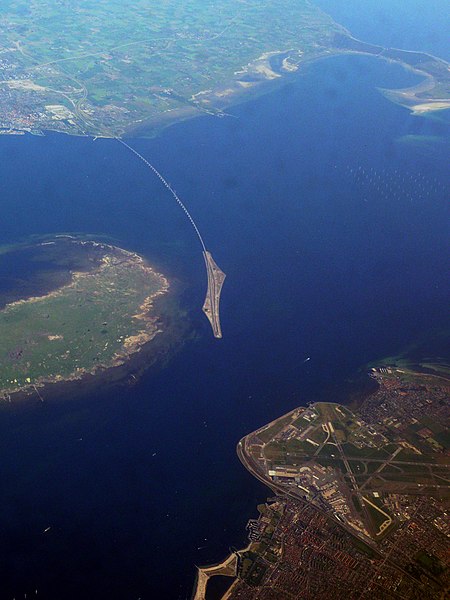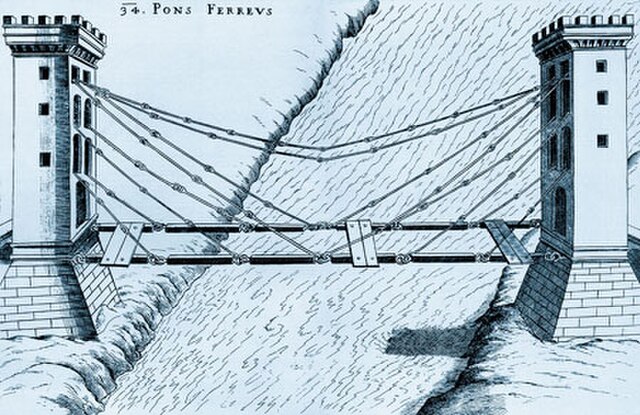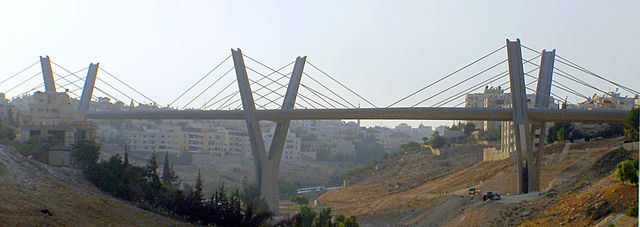The Øresund or Öresund Bridge is a combined railway and motorway cable-stayed bridge across the Øresund strait between Denmark and Sweden. It is the second longest bridge in Europe with both roadway and railway combined in a single structure, running nearly 8 kilometres from the Swedish coast to the artificial island Peberholm in the middle of the strait. The crossing is completed by the 4-kilometre (2.5 mi) Drogden Tunnel from Peberholm to the Danish island of Amager.
September 2015 view from an aeroplane
Øresund Bridge, Øresund
Aerial photo of Øresund Bridge. In the foreground is Copenhagen Airport on the island of Amager, to the left of the bridge is the Danish island of Saltholm, and in the background, the bridge connects to Malmö.
Satellite image of the Øresund Bridge
A cable-stayed bridge has one or more towers, from which cables support the bridge deck. A distinctive feature are the cables or stays, which run directly from the tower to the deck, normally forming a fan-like pattern or a series of parallel lines. This is in contrast to the modern suspension bridge, where the cables supporting the deck are suspended vertically from the main cable, anchored at both ends of the bridge and running between the towers. The cable-stayed bridge is optimal for spans longer than cantilever bridges and shorter than suspension bridges. This is the range within which cantilever bridges would rapidly grow heavier, and suspension bridge cabling would be more costly.
The Russky Bridge in Vladivostok has a central span of 1104 metres. It is the world's longest cable-stayed bridge.
Øresund Bridge from Malmö to Copenhagen in Sweden and Denmark
Chain-stayed bridge by the Renaissance polymath Fausto Veranzio, from 1595/1616. Prior to industrial manufacture of heavy wire rope (steel cable), suspended or stayed bridges were firstly constructed with linked rods (chain).
Abdoun Bridge, Amman, Jordan, example of an extradosed bridge








